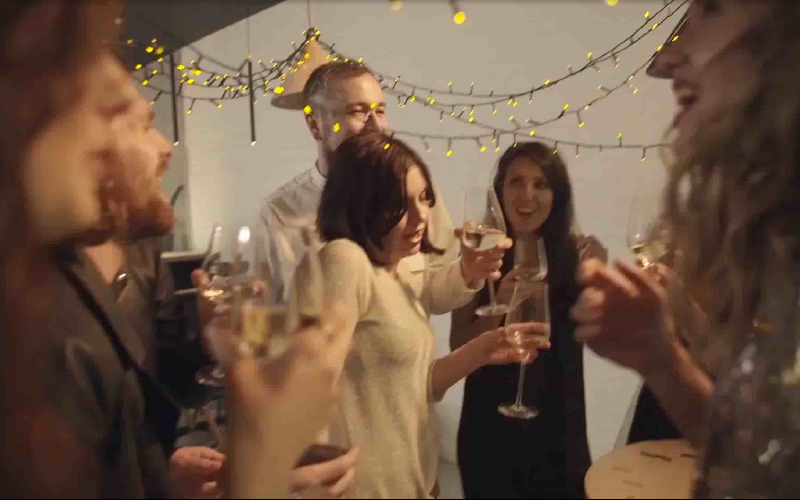The atmosphere of a photography studio sets the tone for the entire creative process. A well-curated environment fosters creativity, enhances focus, and influences the outcome of your work. Start by considering the color scheme and decor; neutral tones often work best, allowing your subjects and props to stand out without distractions. Invest in comfortable, ergonomic furniture to support long hours of shooting and editing. Ambient lighting, such as soft, adjustable lamps, can help create a relaxed environment, reducing stress and boosting creativity. Additionally, integrating personal touches, such as artwork or motivational quotes, can make the space more inviting and inspiring. Finally, ensure proper ventilation and temperature control to maintain a comfortable environment for both you and your subjects. An inviting and well-designed atmosphere is essential for fostering creativity and ensuring your photography studio becomes a space where you can fully immerse yourself in your craft.
Essential Lighting Techniques For A Photography Studio
Photography studio lighting is a fundamental element in photography that can make or break the quality of your images. Mastering various lighting techniques is crucial for achieving professional results. Begin with understanding the basics of three-point lighting: key light, fill light, and backlight. The key light provides the main illumination, while the fill light reduces shadows created by the key light. The backlight adds depth and separates the subject from the background. Experiment with different light sources, such as softboxes, umbrellas, and ring lights, to create diverse effects. For portrait photography, diffused lighting often yields flattering results by softening shadows and reducing harshness. Additionally, consider using reflectors to bounce light and eliminate unwanted shadows. Understanding how to manipulate natural light, such as through window placement or sheer curtains, can also enhance your studio’s versatility. Regularly assess and adjust your lighting setup to suit various shooting scenarios and achieve the desired aesthetic.

The Importance Of Backdrops In Your Photography Studio
Backdrops play a pivotal role in defining the overall look and feel of your photographs. They provide context and can dramatically alter the mood of an image. When selecting backdrops for your photography studio, consider factors such as color, texture, and material. Solid colors or simple patterns are often preferred for portraits, as they keep the focus on the subject. For product photography, seamless paper or fabric backdrops provide a clean, professional look. Additionally, consider investing in a backdrop stand with adjustable height and width to accommodate different sizes. Textured or themed backdrops can add a unique touch to creative shoots, offering versatility for various projects. Regularly inspect and maintain your backdrops to ensure they remain in pristine condition and avoid wrinkles or stains. The right backdrop enhances the visual impact of your photographs and ensures that your studio remains versatile and ready for diverse shooting needs.
How To Design A Functional Photography Studio Layout?
Designing a functional photography studio layout involves careful planning to optimize space and workflow. Start by defining the primary areas of your studio, including shooting space, storage, and editing stations. Ensure that the shooting area is spacious enough to accommodate your lighting equipment, backdrops, and subjects. Consider creating designated zones for different types of photography, such as portrait, product, or fashion. Ergonomic placement of equipment, such as camera stands and lighting, can streamline your workflow and minimize the need for constant adjustments. Incorporate ample storage solutions for props, lenses, and other accessories to keep the studio organized. Additionally, plan for efficient cable management to avoid tripping hazards and ensure a clutter-free environment. The layout should facilitate smooth transitions between tasks, allowing you to focus on creativity rather than logistical challenges. Regularly reassess and adjust your layout as your needs evolve to maintain an efficient and functional workspace.
Top Software For Enhancing Your Photography Studio Workflow
Incorporating the right software into your photography studio can significantly enhance your workflow and productivity. Start with image editing software such as Adobe Photoshop or Lightroom, which offers powerful tools for retouching, color correction, and organizing your photos. For advanced retouching and creative effects, software like Capture One provides professional-grade features. Workflow management tools, such as Adobe Bridge or Photo Mechanic, can help streamline file organization and metadata management. Additionally, consider using cloud storage solutions like Dropbox or Google Drive for secure file backup and easy sharing with clients. Project management software, such as Trello or Asana, can help keep track of deadlines, client requests, and project progress. Integration between these tools can further optimize your workflow, allowing you to focus more on creativity and less on administrative tasks. Regularly update your software and explore new options to stay current with technological advancements and maintain an efficient studio environment.
Budget-Friendly Photography Studio Setups For Beginners
Setting up a photography studio on a budget is achievable with strategic planning and resourcefulness. Start by prioritizing essential equipment, such as a quality camera, basic lighting, and a backdrop stand. Consider purchasing used or refurbished gear to save on costs without sacrificing quality. Look for budget-friendly alternatives to high-end lighting equipment, such as affordable softboxes or LED panels that offer adjustable brightness. DIY solutions can also be effective; for example, create your reflectors using household materials like white foam boards. Invest in versatile props and backdrops that can be used for multiple types of shoots to maximize their value. Explore online resources and tutorials to learn how to make the most of your equipment and setup. As you gain experience and your budget allows, gradually invest in additional tools and upgrades. A thoughtful approach to budgeting ensures that you can build a functional and effective studio without overspending.
Conclusion
Creating a successful photography studio involves a blend of creativity, technical knowledge, and strategic planning. By focusing on elements such as atmosphere, lighting techniques, backdrops, studio layout, software, and budget-friendly setups, you can craft a space that enhances your creative process and produces exceptional results. A well-designed studio not only supports technical excellence but also fosters an inspiring environment where innovation and artistry thrive. As you continue to refine and adapt your studio based on your needs and advancements in technology, you’ll be better equipped to capture stunning images and achieve your artistic vision. Whether you’re a novice or a seasoned professional, mastering these aspects will elevate your photography practice and ensure that your studio becomes a cornerstone of your success.


